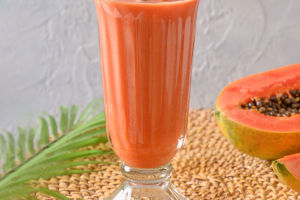Honey has become increasingly popular as a daily health food. When purchasing honey, we often encounter a variety of descriptions on the packaging. So, how should we classify honey?
Honey is a natural product that bees create by collecting nectar from plants and fully brewing it. As a result, there are different types of honey based on the types of plants the bees collect nectar from.
Some common examples include purple yew honey, eucalyptus honey, white thorn flower honey, meadowsweet honey, acacia honey, linden honey, duckfoot honey, citrus honey, wattle honey, lychee honey, cherry honey, wild osmanthus honey, alfalfa honey.
Different types of honey can vary in appearance, taste, and efficacy. For instance, acacia honey has a unique fragrance, a sweet and fresh taste, and is known for its efficacy in improving blood circulation, clearing heat, toning the body, detoxifying, and soothing the mind.
Osmanthus honey, on the other hand, has a fresh and clean taste, a rich and warm aroma, and is believed to eliminate fatigue, promote digestion, and nourish the mind.
There is also a type of honey called "hundred-flower honey" or "multi-flower honey," which is produced when bees collect nectar from two or more types of flowers. Hundred-flower honey has a more complex composition and contains a greater variety of nutrients compared to single-flower honey.
It is commonly known that honey can help alleviate coughing and moisturize the lungs, which is why many parents choose healthy and natural honey for their children when they have a cough.
However, when it comes to purchasing honey, the wide variety of options can be confusing, and some people are unsure about which honey is most effective for coughs. In reality, most types of honey have similar moisturizing and cough-relieving properties.
While all naturally matured honey is beneficial, it's important to note that much of the honey available in the market is diluted with water or processed. Therefore, it is advisable to carefully select honey products and opt for those that are naturally matured.
For enhanced effectiveness, honey can be combined with other ingredients. A popular combination is honey, peanut, and jujube, which is known to be effective in treating coughs accompanied by phlegm. To prepare this remedy, peanuts, and jujube should be decocted in water, allowed to cool, and then mixed with honey before consumption.
During warm weather, honey can undergo changes in consistency, appearing layered as the crystallized honey starts to melt. There are three main reasons for honey stratification:
Some honey crystallizes partially, resulting in two layers: a liquid upper layer and a lower layer of crystallized honey.
When the temperature rises, crystallized honey can melt, leading to a liquid upper layer and a crystalline lower layer. The consistency of the melted honey will be thinner compared to its previous state.
Sometimes, honey is not fully crystallized in the honey bucket, and when it is bottled, a layered situation can occur where the top layer is liquid, and the bottom layer is crystallized. This happens when partially crystallized or starting-to-crystallized honey is bottled, resulting in the layered phenomenon.
Honey can be classified based on factors such as its floral source, whether it is monofloral or polyfloral, the processing method employed, and its color.


